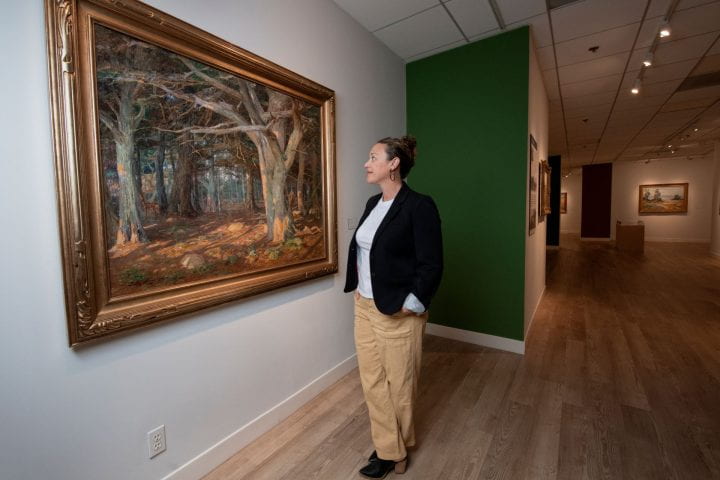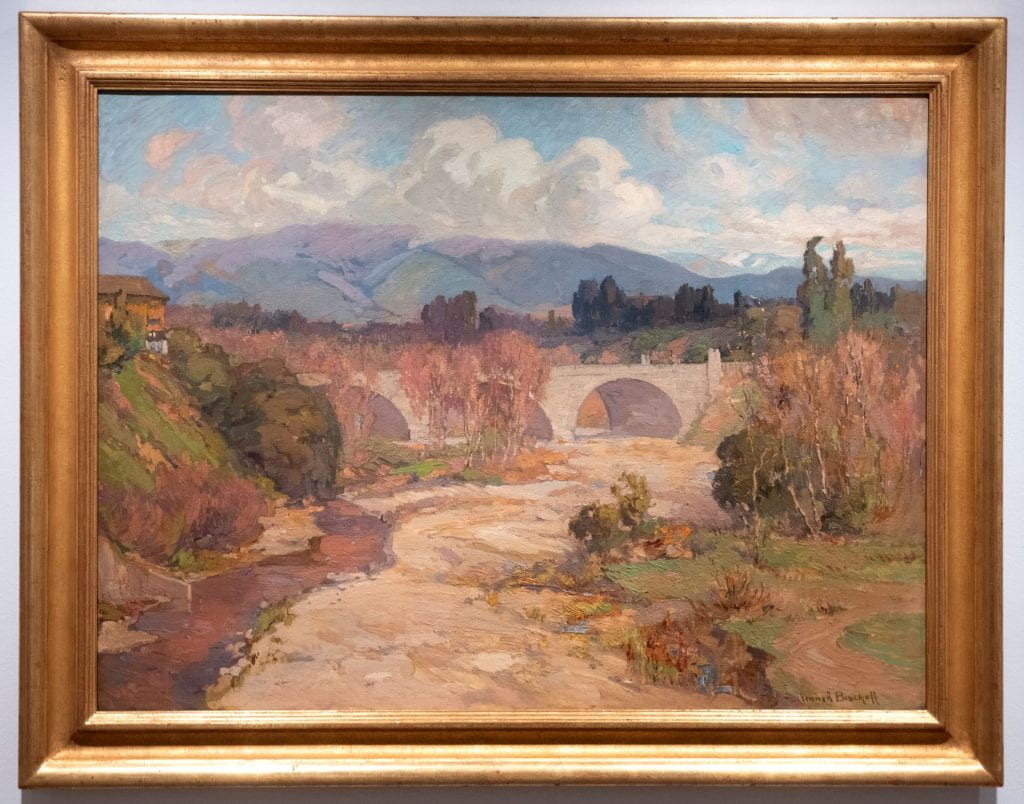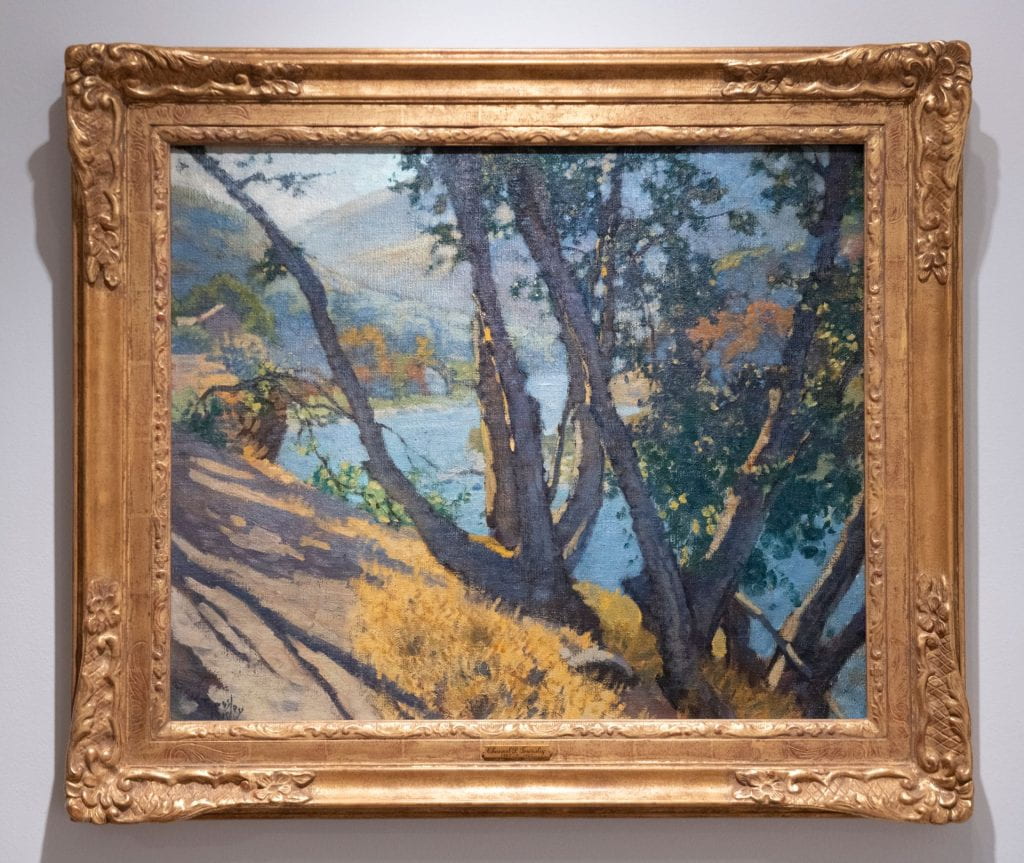‘Indefinitely Wild’
Art exhibition contrasts pristine California landscapes with reality of development

If you’ve ever seen a painting and wondered what was happening outside the frame when it was created, check out “Indefinitely Wild: Preserving California’s Natural Resources,” a new exhibition at UCI’s Jack and Shanaz Langson Institute and Museum of California Art.
On display June 3 to Sept. 9 at 18881 Von Karman Ave. in Irvine, the show juxtaposes idyllic California landscapes with photos, newspaper clippings and other ephemera related to the destruction, commercialization or – occasionally – preservation of such scenery in the late 19th and early 20th centuries.
As “uncultivated land was quickly being turned into groves, farmland and ranches, artists persisted in capturing expansive meadows and wide-open spaces,” notes guest curator Cassandra Coblentz.

Other painters, working on commissions from railways promoting tourism, depicted pristine shorelines, despite the growing scarcity of such spots.
The exhibition, which borrows its “Indefinitely Wild” label from a passage in Henry David Thoreau’s book Walden, features 25 paintings and six previously unseen-in-public watercolors from Langson IMCA’s Buck and Irvine Museum collections.
The gallery is divided into five sections – mountains, trees, the coast, water and land. In each, the art on the walls is put into historical context by explanatory texts and glass cases holding everything from avocado brochures to certificates for oil company stock from 1900.
In one area, for instance, an impressionist portrait of a solitary tent on a wild seaside bluff is paired with an archival photo in which a throng of similar tents dots Aliso Creek Beach.
Elsewhere, artwork of majestic mountains and lush forests is contrasted with photographs of mining and logging operations. But an upside is also presented. The environmental toll of the Gold Rush helped spur John Muir to form the Sierra Club in 1892, the exhibition explains. And the devastation wrought by timber companies led President Abraham Lincoln to sign an 1864 bill to protect Yosemite Valley and the nearby Mariposa Grove of Giant Sequoias.
But the clash between development and preservation is unavoidable, Coblentz says. From 1849 to 1852, California’s population mushroomed from 100,000 to 255,000 – and by 1930, Los Angeles alone claimed more than 1 million residents, paving the way for a nature-altering network of aqueducts, dams and reservoirs.
Thus, in the exhibition’s water section, the parched creek bed and tiny stream in Franz A. Bischoff’s 1912 “Arroyo Seco Bridge” are now a concrete flood channel, while Channel Pickering Townsley’s 1919 “Bend of the River” captures an extinct view of the San Gabriel River.

Nearby, Granville Redmond’s portrait of Los Angeles Harbor in 1906 hangs next to Alson Skinner Clark’s rarely seen “Pedro Miguel Locks,” a 1913 work depicting construction of the Panama Canal, a project that would eventually turn L.A. into a major international port.
Coblentz, who normally curates contemporary art, hopes museum visitors will come away reflecting on the long-standing push-pull between conservation and growth. “That tension has always been part of California,” she says. “We often assume the state’s wild spaces will always be there, but that’s not the case. The goal of the exhibition is to offer a nuanced understanding of the persistent need for protection and care of our natural environment.”
Full artwork credits:
Detlef Sammann, Del Monte Forest, 1915, Oil on canvas, 40 x 50 in. UCI Jack and Shanaz Langson Institute and Museum of California Art, gift of The Irvine Museum
Franz A. Bischoff, Arroyo Seco Bridge, 1912, Oil on canvas, 30 x 40 in. UCI Jack and Shanaz Langson Institute and Museum of California Art, gift of The Irvine Museum
Channel Pickering Townsley, Bend of the River, 1919, Oil on canvas, 25 x 30 in. UCI Jack and Shanaz Langson Institute and Museum of California Art, gift of The Irvine Museum

